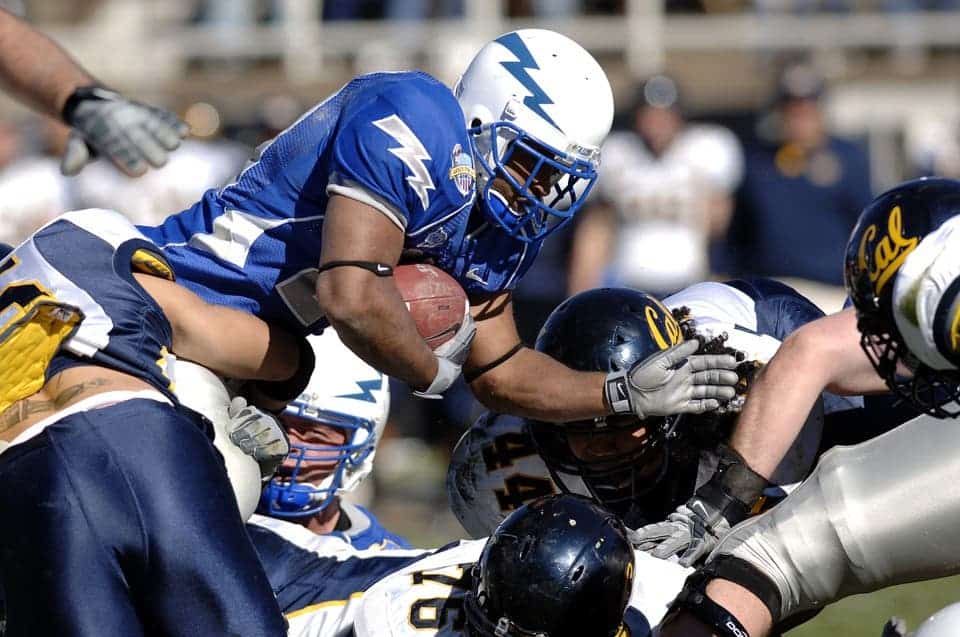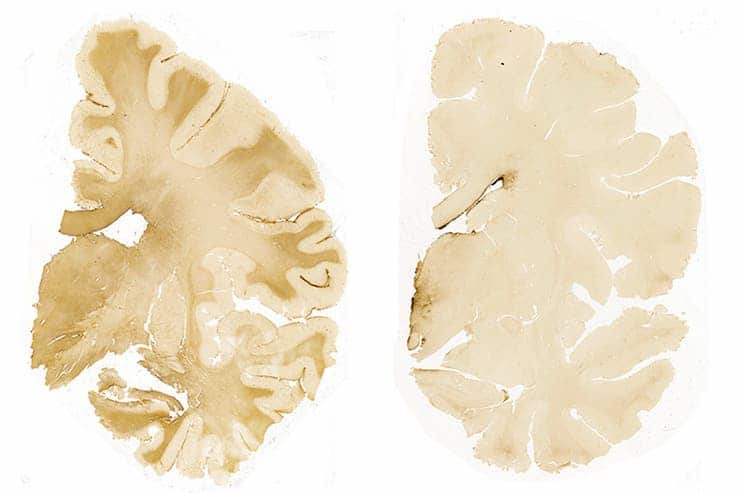Doctors who diagnose a degenerative brain disease that typically affects athletes, veterans and others who have suffered repeated brain trauma, have been focusing on the wrong causes. New research suggests that chronic traumatic encephalopathy (CTE) is caused by repeated head injuries — and not concussions, as previously believed. The findings explain, for instance, why 20 percent of CTE athletes who exhibited the early stages of the illness postmortem never had a diagnosed concussion.

CTE was formerly believed to exist primarily among boxers and was referred to as dementia pugilistica, now classed as a subtype of CTE.
Individuals suffering from CTE will suffer gradually deterioration of their brains and will end up losing brain mass over the years or decades. Some parts of the brain are particularly vulnerable to atrophy while others are prone to becoming enlarged. Another defining aspect of CTE is the accumulation of tau protein, which serves to stabilize the cellular structure in the neuron but which can damage the function of the neuron when the protein becomes defective.
Clumps of tau proteins are commonly found in the Alzheimer’s-diseased brain but what sets CTE apart is that the tau clumps form around small blood vessels, and most often near the bottom of sulci, the deep folds in the brain’s cortex. Severe CTE also affects deeper brain structures like the hippocampus, the amygdala, and the brain stem.
The symptoms of CTE can be debilitating and may have life-changing effects for both the individual and their family. Common symptoms include memory loss, difficulty controlling impulsive or erratic behavior, impaired judgment, behavioral disturbances like aggression and depression, difficulty with balance, and a gradual onset of dementia.
In 2017, a lot of attention was drawn to CTE and the ungodly number of NFL players who suffer from the brain disease. Dr. Ann McKee, a neuropathologist at Boston University, found that 110 out of 111 former NFL players, whose brains were donated by their families for study, had CTE, as reported in The Journal of the American. The media backslash was pretty intense with many voices criticizing the NFL for not enforcing more rules that might, at least, soften the impact of this devastating disease.
At the same time, many important questions remained unanswered. How common is CTE in sports? What really causes CTE more precisely?
Now, McKee and colleagues have conducted a new study whose conclusion at least answers this last question. Their conclusion is that repeated head trauma, and not concussions in particular, is what eventually triggers the degenerative brain disease.
The team examined the brains of four dead teenage athletes who’d suffered head injuries 1, 2, 10, and 128 days before they died. A range of post-trauma pathologies was identified, including one case of early CTE (the disease has four stages) and two brains with abnormal tau accumulations.
Previously, researchers who studied mice realized that the impacts that caused concussion and those that led to CTE had different effects on the brain.

McKee and colleagues suspect that early CTE could result from damaged brain blood vessels that leak blood proteins into nearby tissue, causing inflammation of the brain. The researchers reached this conclusion after scanning the brains of mice which either suffered repeated head impacts or blast exposures.
Capillaries, the smallest and most important blood vessels, were particularly affected. These blood vessels are essential to oxygen and nutrient transport, as well as waste removal. Injuries to the head result in focal disruption of capillaries, causing protein leakage into the brain.
Taken together, this body of evidence suggests that early CTE may result from leaky blood vessels in the brain.
“The same brain pathology that we observed in teenagers after head injury was also present in head-injured mice,” says Lee Goldstein, an associate professor of psychiatry at Boston University’s School of Medicine, and study co-author. “We were surprised that the brain pathology was unrelated to signs of concussion.”
The researchers argue that their findings published in the journal Brain provide a strong causal evidence that links head impacts to both traumatic brain injury and early CTE, “independent of concussion.” Football and other similar sports won’t change their rules too soon but it’s studies such as these that will one day help athletes protect their health by being more aware of the risks they’re subjecting themselves to.
“In order to reduce CTE risk” in athletes and military veterans, “there must be a reduction in the number of head impacts,” said McKee, who is the director of the CTE Center. “The continued focus on concussion and symptomatic recovery does not address the fundamental danger these activities pose to human health.”






